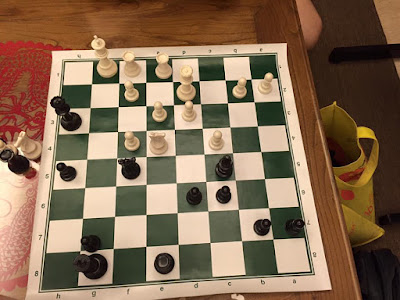Positional Chess
This is a puzzle from GM Preparation: Positional Play.
They are like normal games where you have to think and come up with the best way to continue, maybe you think
The puzzles in this book are generally not play and win.
They are like normal games where you have to think and come up with the best way to continue, maybe you think
1. Where are my opponent's weaknesses?
2. Which is my worst placed piece?
and you go from there to try and formulate a course of action.
and you go from there to try and formulate a course of action.
It is important to spot the idea here. I saw it in a few seconds because asking those questions have become 2nd nature to me, so much so that my brain does it automatically. After I spotted it then I just check some lines.
See if you can work it out. See below for my thoughts/thinking process on the position.
When I saw this position, I immediately saw that c6 was weak. You have Qa4/Ne5/Na5/Bf3 to attack it. But if it comes under too much pressure, black can simply play c5 (Important to fix a weakness).
Then I saw that black could play c5 now and after an exchange on d4, I would be left with a weak d-pawn. So 0-0 here would allow Black to achieve his plan.
Which is my worse placed piece?
You can think of this as which is the best square for my pieces. (Have you seen the move yet?)
I saw that the h2-b8 diagonal was weak. And the Black Queen lack good squares thanks to the c4-Knight.
Forming a course of action/plan
My Queen, Knight, f3 Bishop all have something to do. My g5 Bishop however isn't doing anything. So how do I bring it to the h2-b8 diagonal. I don't wanna play Qd2 because I want to play Qa4. So Bh4! with the idea of Bg3.
All that is left to do is calculate the lines. I normally see a few sample lines and if I feel happy about my position, I stop.
The main thing to take away from this post is the thought process. Hope this was instructive.


Comments
Post a Comment